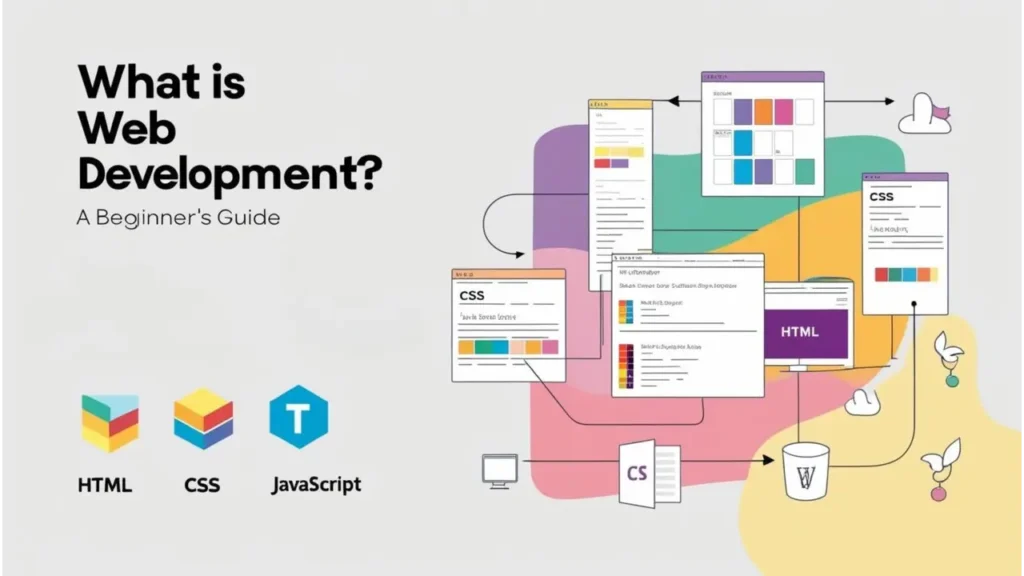In today’s digital-first world, content marketing strategy plays a pivotal role in driving growth for B2B companies. With the right approach, content marketing can attract qualified leads, nurture valuable relationships, and position your business as a thought leader in the industry. However, simply producing content isn’t enough. To truly succeed, B2B companies must develop a comprehensive content marketing strategy that aligns with business goals, resonates with the target audience, and ensures long-term growth.
This guide provides a step-by-step approach to creating a content marketing strategy that maximizes your company’s visibility and growth. From understanding your audience and crafting compelling content pillars to effective distribution strategies and measuring success, this post covers everything you need to know to build a winning B2B content marketing strategy.
Key Takeaways
- Introduction to Content Marketing Strategy for B2B Companies
- Understanding Your Audience and Setting Goals
- Developing Compelling Content Pillars
- Optimizing Content Distribution
- Promoting Your Content for Maximum Reach
- Measuring Content Marketing ROI
- Consistency and Adaptability in Content Marketing
- Conclusion: Achieving Long-Term Success with B2B Content Marketing
Table of Contents
Understanding Your Audience and Setting Goals
The Foundation of Success
Before you can start crafting content, it’s essential to understand who your audience is and what their needs are. This foundational step determines the relevance, tone, and format of the content you create, making it critical to get right.
- Conduct Audience Research: Start by identifying who your target customers are. Use market research to gather data on their demographics, pain points, goals, and content consumption preferences. Tools like surveys, interviews, and customer feedback forms can help you gain insights into your target audience.
- Develop Buyer Personas: Buyer personas are detailed profiles of your ideal customers. These should include information on their job roles, company size, challenges, and preferred information sources. For example, in B2B industries, you might have personas such as “CTO Cathy” or “Marketing Manager Mike,” each with unique needs and pain points.
- Analyze Competitor Content: Study your competitors to identify gaps in their content strategy. What topics do they cover? What content formats do they use? Understanding what your competitors are doing well (and where they fall short) can help you refine your own approach.

Defining Your Content Marketing Goals
Clearly defined goals are the cornerstone of a successful content marketing strategy. By aligning your content with your overall business objectives, you can track progress and measure success effectively. Common content marketing goals for B2B companies include:
- Lead Generation: Attract new leads by creating valuable content that addresses specific pain points and interests of your target audience.
- Brand Awareness: Increase visibility and establish your brand as a key player in your industry.
- Customer Engagement and Nurturing: Use content to build relationships with potential customers and nurture them throughout the buyer’s journey.
- Thought Leadership: Position your company as an expert in the field by sharing high-quality, insightful content that showcases your industry knowledge.
By defining clear objectives, you can better align your content creation and distribution strategies to achieve your desired outcomes.
Developing Compelling Content Pillars
Once you understand your audience and have set goals, it’s time to define your content pillars. These are the key themes or topics that your content will revolve around. Content pillars are vital to maintaining focus and consistency in your strategy, ensuring your content remains relevant to your audience.
Focus Your Content Strategy
Content pillars should align with both your business’s expertise and your audience’s needs. Examples of B2B content pillars could include:
- Industry Trends and Insights: Sharing your perspective on current trends, challenges, and opportunities within your industry.
- Product Solutions: Highlighting specific features, benefits, and use cases of your products or services.
- Best Practices and How-Tos: Offering practical advice on solving specific problems or optimizing workflows.
Focusing your content around these core themes ensures consistency and establishes your brand as a valuable resource in those areas.
Crafting Valuable and Engaging Content
B2B content doesn’t have to be dry or overly technical. It’s essential to create content that engages and educates your audience while also highlighting your company’s expertise. A few strategies include:
- Utilize a Variety of Content Formats: Different people consume content in different ways. By diversifying your formats, you can reach a wider audience and increase engagement. Examples of effective B2B content formats include:
- Blog Posts: Provide detailed insights into industry trends or offer solutions to specific challenges.
- White Papers and eBooks: Offer in-depth analyses or case studies that showcase your company’s expertise.
- Webinars: Host live discussions or presentations that engage prospects in real-time.
- Infographics: Simplify complex information into visually appealing graphics that are easy to share.
- Videos: Videos can demonstrate products, showcase testimonials, or provide thought leadership insights.
- Focus on Value and Relevance: Always ensure your content provides value to your audience. Whether it’s educating them on industry trends or offering practical solutions to their pain points, valuable content will keep your audience coming back.
- Incorporate Storytelling: Storytelling is a powerful way to humanize your brand and make technical information more relatable. Use real-life case studies, customer success stories, or hypothetical scenarios to illustrate key points and make your content more engaging.

Optimizing Content Distribution
Creating high-quality content is only half the battle. To maximize the impact of your content marketing strategy, you need to ensure it reaches the right audience through the right channels. Content distribution involves selecting platforms and optimizing your content for maximum reach and visibility.
Choose the Right Channels
Selecting the right channels for content distribution is essential for connecting with your target audience. Consider the following distribution channels:
- Your Company Website: Your website is the foundation of your content marketing strategy. Make sure it’s optimized for SEO and user experience. A well-maintained blog or resource hub can serve as a central point for sharing your content.
- Social Media: LinkedIn is particularly valuable for B2B content marketing. Share industry insights, company news, and product updates on LinkedIn to engage with your professional audience. Don’t forget about Twitter, Facebook, and YouTube, depending on your content formats.
- Email Marketing: Your email list is a powerful tool for distributing content to your existing audience. Segment your list to send tailored content based on user interests or buying stages.
- Industry Publications: Consider partnering with respected publications or websites in your industry to expand your reach and gain credibility. Guest blogging or submitting articles to these platforms can drive significant traffic and build trust.
Search Engine Optimization (SEO)
SEO is critical for ensuring your content is discoverable by potential customers. Optimize your content with relevant keywords, proper meta tags, and high-quality backlinks to improve organic search visibility. Understanding what your audience searches for and tailoring your content to those keywords can significantly increase your website traffic.
Promoting Your Content for Maximum Reach
In addition to organic distribution, promoting your content actively can amplify its reach. Content promotion strategies ensure that your content is seen by a larger, more relevant audience.
Social Media Promotion
Promoting content on social media is a powerful way to boost visibility and engagement. When sharing on social platforms:
- Use engaging visuals and compelling headlines to capture attention.
- Incorporate relevant hashtags to improve discoverability.
- Engage with comments, shares, and followers to encourage conversation and expand reach.
Email Marketing Campaigns
Leverage email marketing to regularly distribute content to your audience. Create segmented email lists to send tailored content based on specific customer personas or interests. Personalization in emails can improve click-through rates and engagement.
Industry Outreach
Building relationships with influencers, bloggers, journalists, and industry experts is another effective way to promote your content. Consider guest blogging, co-creating content, or participating in industry webinars or podcasts to extend your reach beyond your immediate audience.
Measuring Content Marketing ROI
To ensure your content marketing strategy is delivering the desired results, you need to measure key performance indicators (KPIs) regularly. Tracking the right metrics allows you to optimize your approach based on data and continually improve your content marketing efforts.

Metrics to Track
Key metrics to monitor include:
- Website Traffic: Track the number of visitors to your site, page views, and time spent on each page to understand how engaging your content is.
- Lead Generation: Monitor how many leads your content generates, including email signups, form submissions, and content downloads.
- Social Media Engagement: Measure likes, shares, comments, and overall engagement rates to gauge the impact of your social media content.
- Conversion Rates: Track how many content leads ultimately convert into sales or take meaningful actions such as requesting a demo or consultation.
Analytics Tools
Leverage analytics tools like Google Analytics and social media insights to track traffic sources, user behavior, and content performance. These tools offer insights into which types of content resonate most with your audience and which distribution channels are most effective.
Consistency and Adaptability in Content Marketing
Content marketing is a long-term strategy that requires consistency and adaptability. Continuously creating high-quality, relevant content helps you build authority and trust with your audience.
Stay Consistent
Establish a content calendar and commit to producing content regularly. Whether you’re posting blogs weekly, creating monthly webinars, or sending out email newsletters, consistency is key to building a loyal audience.
Adapt to Trends
Stay informed on evolving content marketing trends and embrace new technologies. Consider incorporating emerging formats like podcasts, interactive content, or augmented reality (AR) to keep your audience engaged.
F&Q
1. What is a content marketing strategy for B2B companies?
A content marketing strategy for B2B companies is a comprehensive plan that outlines how a business will create, distribute, and promote valuable content to attract and engage its target audience. The goal is to generate leads, increase brand awareness, nurture relationships, and establish thought leadership.
2. Why is audience research important in a B2B content marketing strategy?
A content marketing strategy for B2B companies is a comprehensive plan that outlines how a business will create, distribute, and promote valuable content to attract and engage its target audience. The goal is to generate leads, increase brand awareness, nurture relationships, and establish thought leadership.
3. What are content pillars in a B2B content marketing strategy?
Content pillars are the core themes or topics around which your content is created. These topics should align with your business expertise and the needs of your audience. Common B2B content pillars include industry trends, product solutions, and best practices.
4. What types of content work best for B2B companies?
B2B companies can engage their audience through a variety of content formats, including blog posts, white papers, case studies, webinars, infographics, and videos. The key is to provide valuable, informative, and engaging content that educates and solves the audience’s challenges.
5. How do I optimize my B2B content for SEO?
To optimize content for SEO, identify relevant industry keywords that your target audience is searching for, use these keywords in your titles, meta descriptions, and body text, and build quality backlinks to your content. This improves search engine rankings and drives organic traffic to your site.
6. What are the most effective distribution channels for B2B content?
The most effective distribution channels for B2B content include your company website, LinkedIn, email marketing, industry publications, and guest blogs. Choosing the right platforms depends on where your target audience consumes content.
7. How can I promote my B2B content for wider reach?
You can promote your content through social media platforms (especially LinkedIn for B2B), email marketing, industry outreach (e.g., guest blogging or partnerships), and paid promotions to increase visibility and reach a broader audience.
8. How do I measure the success of my B2B content marketing strategy?
Measure success using key performance indicators (KPIs) such as website traffic, lead generation, social media engagement, and conversion rates. Tools like Google Analytics and social media insights can provide detailed metrics on how your content is performing.
9. How important is consistency in B2B content marketing?
Consistency is critical in B2B content marketing. Regularly publishing high-quality content builds trust with your audience, establishes your authority in the industry, and helps you stay top of mind with potential customers.
10. What trends should I follow in B2B content marketing?
Stay updated on emerging trends like podcasts, interactive content, and augmented reality (AR). These formats can provide fresh and engaging ways to communicate with your audience, keeping your content relevant and engaging.
Conclusion
Building a winning B2B content marketing strategy is a marathon, not a sprint. It requires a clear understanding of your audience, setting strategic goals, crafting compelling content, and distributing it effectively across multiple channels. Consistency, combined with data-driven insights and adaptability, ensures long-term success in establishing
your brand as an industry leader.
By implementing the steps outlined in this guide and embracing a strategic approach to content marketing, you can attract qualified leads, foster meaningful relationships, and ultimately drive business growth.
Ready to take your B2B content marketing to the next level? WODO Digital offers comprehensive services to help you achieve your goals, from content creation and strategy development to distribution and promotion. Contact us today to learn how we can support your B2B content marketing efforts!












